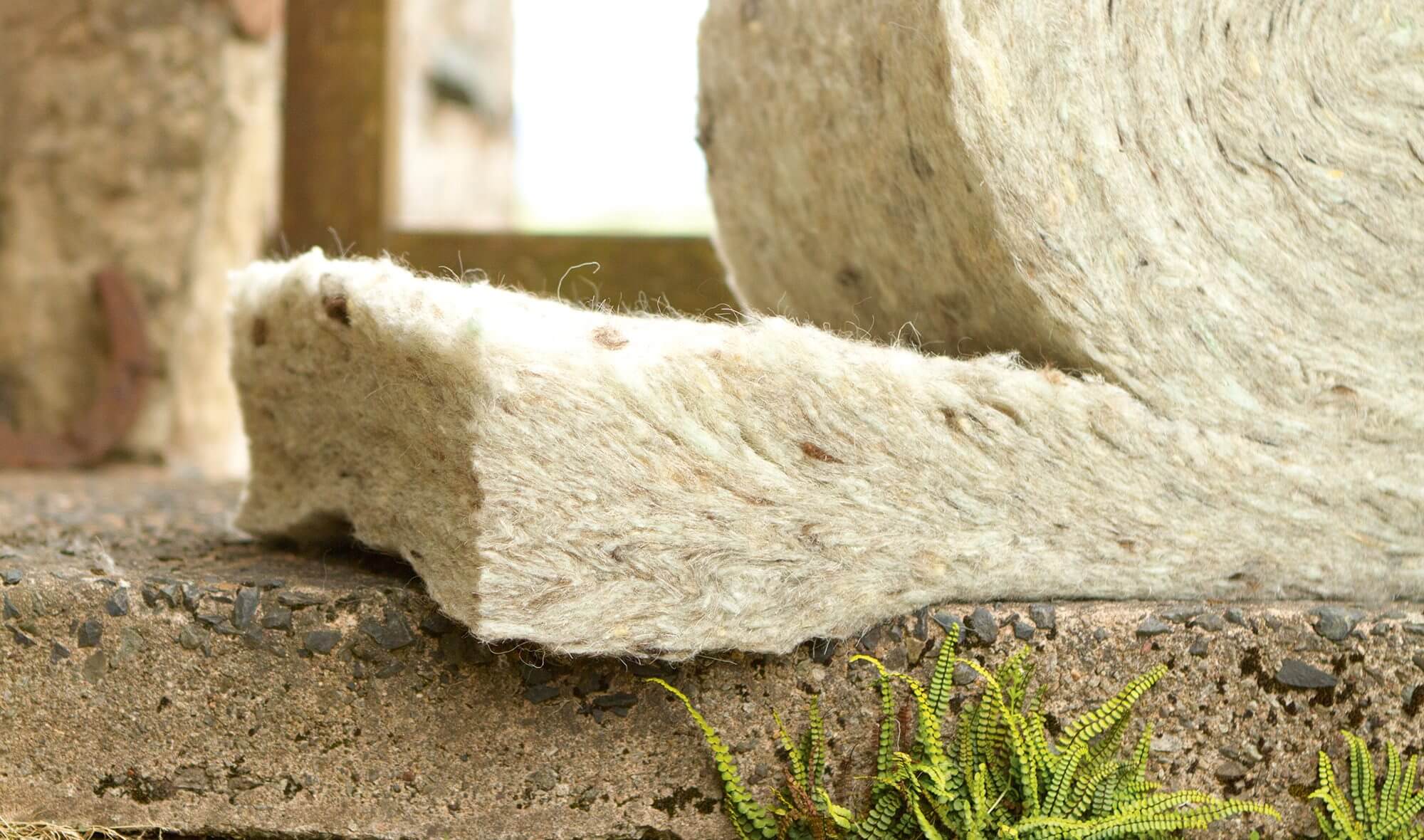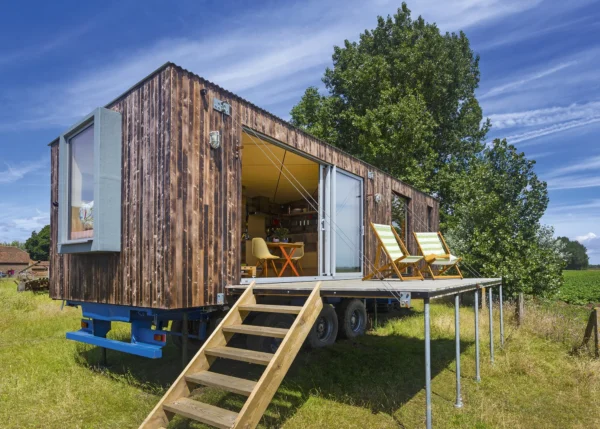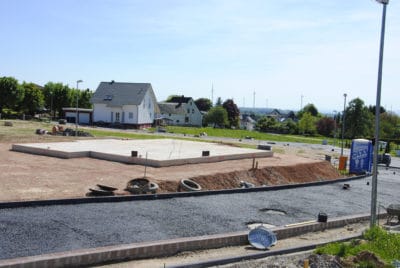Choosing Natural Insulation
In the drive for greener properties with manageable heating bills, a growing number of self-builders and renovators are making insulation a top priority. Installing manmade options such as fibreglass or rockwool in the walls, roof and floors is one of the most straightforward and cost-effective ways to keep the warmth in, but people focused on their home’s eco-credentials may prefer to choose natural insulation materials for the job.
“Manmade varieties are fabricated at extremely high temperatures, which means a lot of CO2 is used throughout the process,” says Bethan Mulvenna, technical sales manager at IPP Black Mountain. Sheep’s wool, hemp and jute-based products have a low embodied energy (that used to manufacture a product), which equates to a reduced carbon footprint.
These products also provide enhanced breathability, which makes them ideal for many period homes and means they can fit well in some new build dwellings, too.
Is natural insulation always suitable?
Despite their sustainable attributes, natural materials are not interchangeable with manmade products. “They rot if they get wet and can’t dry out,” says Gary Newman, executive chair at the Alliance for Sustainable Building Products (ASBP). “As such, they shouldn’t be used within the cavity of a brick and block construction because the hollow area is moist – which would compromise their performance and lead them to decay.”
However, natural fibre can wick water vapour, making it a good choice for breathable structural systems, such as timber frame. “If you think of insulation as a sponge, products like sheep’s wool will soak up excess water from the atmosphere and allow it to evaporate later,” explains Neil May, a founding member of the ASBP.
“However, mineral wool won’t absorb it and the timber frame will need to be treated with powerful chemicals to prevent rot. Using such strong products on the wood means it can’t be recycled at the end of the building’s life.”
Sheep’s wool insulation
In the UK, sheep’s wool dominates the natural insulation market. Unlike manmade materials, this product can chemically bind to water droplets in the atmosphere. Even when it contains up to 30% of its own weight in moisture, the wool still feels dry to touch and performs effectively, making it a robust choice for walls, loft and roof areas even where there’s high levels of humidity.
Sheep’s wool also boasts an impressive set of eco-credentials. “As well as being a locally-grown and rapidly renewable material, its ability to absorb and release liquid makes it an ideal choice where healthy, breathable construction is key,” says Chayley Collis from the Green Building Store.
Generally, the sheep’s wool used for insulation is a by-product that cannot be used in the textile industry. Options such as Black Mountain’s NatuWool are treated with a naturally-occurring mineral in order to deter moths once the insulation has been fitted. Sheep’s wool is also a biodegradable material that can be recycled or composted if and when the building is demolished, so long-term sustainability is ensured.
Installing sheep’s wool insulation
A professional fitter is not usually required for the installation of sheep’s wool, which is available in batts and rolls. Upgrading standard loft insulation is a straightforward process, for instance: simply roll the fleece out between joists and at 90˚ angles for the subsequent layers. The roll shouldn’t be taken all the way to the edge of the roof structure, as a gap is required for air movement to minimise the risk of condensation.
If there’s already a good layer of existing insulation you can top it up with sheep’s wool to achieve the performance level you want. This natural option is not recommended for screeded floor systems as the concrete slab would squash the material and make it ineffective.
It’s vital to specify a product that is of adequate thickness to provide the required U-value. A variety of dimensions are available to suit different applications. “For loft insulation, I would recommend a depth of at least 270mm; the same as what is advised for manmade insulation products,” advises Chayley. Sheep’s wool options cost within the region of £4-£12 per m2, depending on the density of the product and the thickness of the batt/roll.
Plant-based insulation products
Throughout history, hemp – a fast-growing break crop – has been celebrated for its durability. The fine fibres of the plant are ideal for the development of insulation materials, and these products provide thermal conductivity on a par with sheep’s wool.
Although typically slightly more expensive – Thermafleece’s NatraHemp will start from around £9.80 per m2 – hemp is a good choice for people who are allergic to wool or want to avoid using animal-based materials. The batts also have a greater density than their wool counterparts, giving them the edge when it comes to their acoustic performance.
“Hemp products use up less CO2 when they’re manufactured than the plant takes in during its entire lifetime. This makes them carbon negative and therefore very attractive to self-builders seeking green solutions,” explains Bethan.
Hemp will absorb 20% of its own weight in moisture without any effect on its thermal conductivity, making it a robust choice for roofs, walls and suspended floor constructions. It’s safe to handle, so there’s no need for the fitter to don protective gear.
The flexible batts can be cut to the correct size and shape before they are squeezed and stapled into place between joists and rafters. Thanks to its ability to draw in significant amounts of condensation before releasing it at a slower rate, hemp is also ideal in timber frame constructions to prevent moisture from damaging the wood.
Offering similar benefits for eco-conscious self-builders, jute is a vegetable fibre can be spun into strong threads and made into a pliable insulation material. Made from recycled cocoa and coffee bags, Thermo Jute 100 from Ecological building Systems UK provides a thermal conductivity of 0.038 W/mK – similar to the level provided by wool and hemp.
Photo: Available in a variety of thicknesses, his highly breathable product contains 75% wool and 25% recycled fibres. Thermafleece CosyWool, from £4.86 per roll



































































































 Login/register to save Article for later
Login/register to save Article for later













Comments are closed.